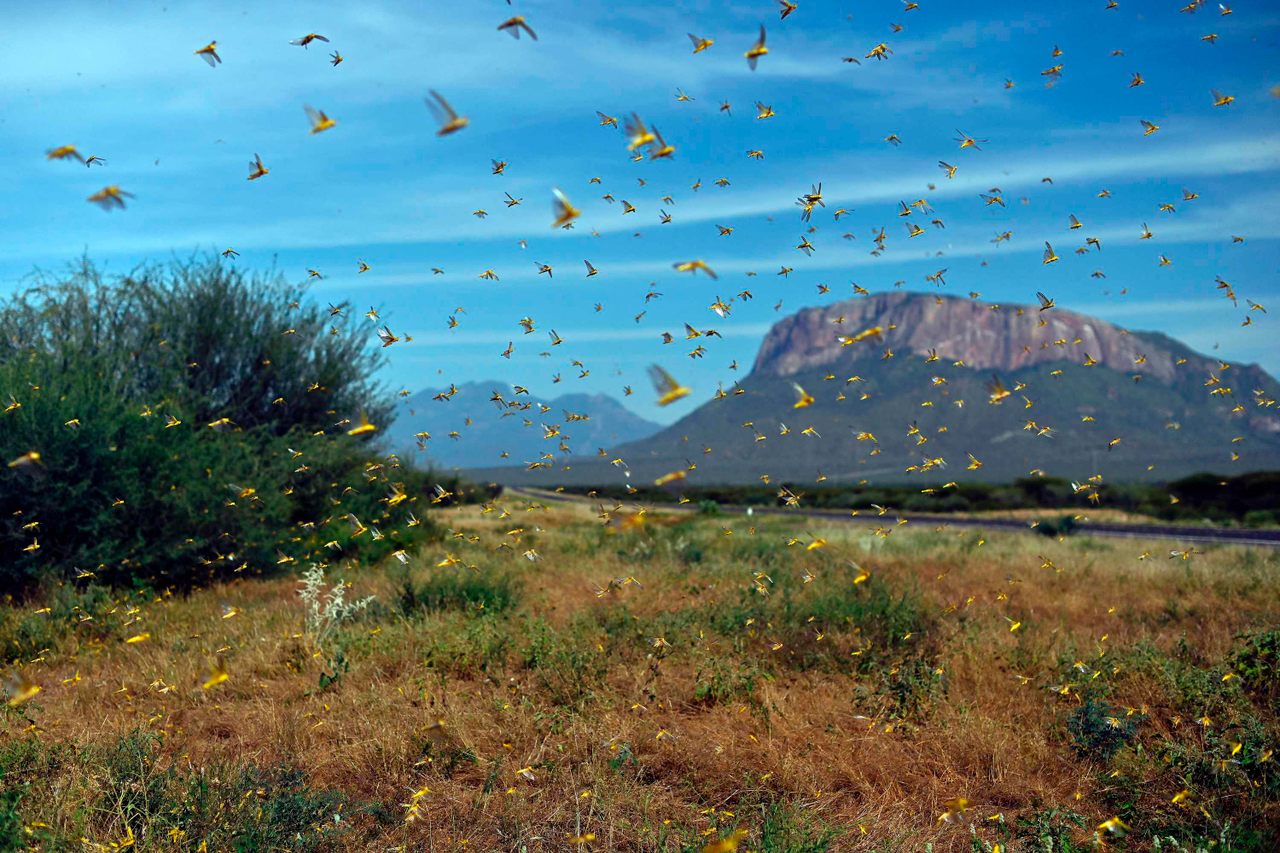How Climate Change Helped Spawn an East African Locust Crisis
Pictures from the ground show an insect storm of biblical proportions.
This story was originally published by Grist and appears here as part of the Climate Desk collaboration.
An alien species visiting Earth in the year 2020 would be forgiven for assuming that humankind had succeeded in pissing off some kind of vengeful God. This month alone, mega-wildfires ripped through Australia, massive king tides swept California shorelines, and, now, billions of desert locusts have descended on East Africa in an insect storm of biblical proportions. But climate change, not an angry deity, is to blame.
East Africa had an unusually wet year in 2019—warming waters in the Indian Ocean produced a high number of tropical cyclones, which doused the coast and created “exceptional” conditions for locust breeding, Nairobi-based climate scientist Abubakr Salih Babiker told the Associated Press. Now, swarms of hungry insects are feasting on crops in the Horn of Africa, where millions of people already lack reliable access to nutritious food.

The United Nations Food and Agriculture Organization (FAO) says a swarm the size of Paris can gobble up as much grub as half the population of France. To make matters worse, desert locusts can travel up to 80 miles a day and multiply at terrifying speeds. Ethiopia, Kenya, and Somalia, the FAO said, are dealing with swarms of “unprecedented size and destructive potential.”

Kenya plans to spend $5 million to curtail the worst locust invasion it’s had in 70 years. Meanwhile, the FAO is asking wealthier nations to take urgent action and calling for $70 million in emergency funding. The problem, the organization says, could quickly spread to other parts of East Africa.
Pictures from the ground show the extent of the burgeoning crisis. If these desert locusts aren’t reined in soon, the FAO says, swarms could be 400 times their current size by the beginning of summer.



















Follow us on Twitter to get the latest on the world's hidden wonders.
Like us on Facebook to get the latest on the world's hidden wonders.
Follow us on Twitter Like us on Facebook